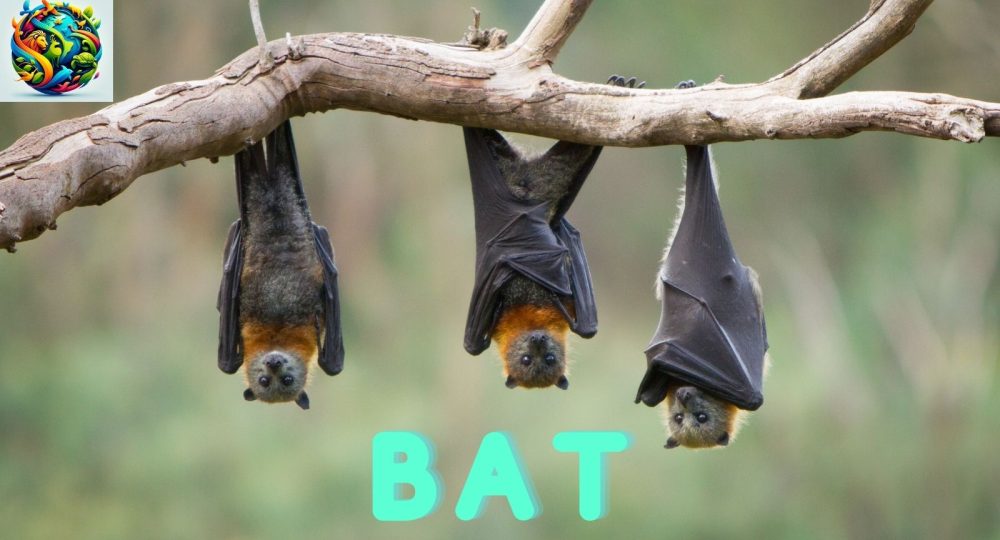Bats: Night’s Master and Phenomenal Flyers
Introduction
Bats, the only mammals capable of sustained flight, play crucial roles in ecosystems around the world. Misunderstood and often surrounded by myths, these nocturnal creatures are essential for pollination, seed dispersal, and controlling insect populations. This comprehensive exploration delves into their habitats, dietary habits, physical characteristics, and much more, shedding light on their diverse and fascinating world.
Amazing Fact
An astonishing capability is their ability to consume up to their body weight in insects each night, serving as natural pest controllers and significantly reducing the reliance on chemical pesticides in agriculture.
Habitat/Food
Adaptable to various environments, they can be found in urban areas, tropical forests, and deserts alike. Their diet ranges from insects and fruit to flower nectar, reflecting their ecological significance and vast geographical distribution.
Appearance
They exhibit a wide range of sizes, colors, and shapes across species. The tiny bumblebee bat weighs less than a penny, while the giant golden-crowned flying fox boasts a wingspan of up to 5 feet. Their forelimbs are uniquely developed as wings, distinguishing them as the only true flying mammals.
Types and Subspecies of Bats
They are incredibly diverse, with over 1,400 species classified into two main suborders:
- Megachiroptera: larger fruit bats, relying more on vision and smell for navigation and food finding.
- Microchiroptera: smaller, echolocating bats utilizing high-frequency sounds to navigate and locate prey in the dark.
Where They Are Found
They are globally distributed, inhabiting every continent except for the most extreme deserts and polar regions. Their ability to fly has enabled them to colonize a broad range of environments.
Predator and Threat
Numerous threats confront them, including habitat destruction, climate change, disease, and persecution. The spread of white-nose syndrome, a devastating fungal disease, underscores the urgent need for conservation efforts to safeguard these critical animals.
Mating
Their mating practices vary, with some species exhibiting seasonal mating, sperm storage, or delayed fertilization. Maternal care is a significant aspect of bat life, with mothers often solely responsible for nurturing their young.
How They Communicate
Communication among them involves echolocation, vocalizations, and scent markings. Echolocation serves the dual purposes of navigation and conveying information about an individual’s identity and condition.
Benefits to Agriculture
They are vital for agriculture as natural pest controllers, consuming vast amounts of insects every night, including pests that damage crops. This natural pest control can significantly reduce the need for chemical pesticides, promoting healthier and more sustainable farming practices. Additionally, fruit bats play a role in pollinating plants and dispersing seeds, aiding in the growth of new plants and trees.
Pronunciation in Different Languages
- English: Bat
- Spanish: Murciélago
- French: Chauve-souris
- German: Fledermaus
- Italian: Pipistrello
- Mandarin: 蝙蝠 (Biānfú)
FAQs
Do all bats have rabies?
Only a small percentage carry rabies; however, any grounded or approachable bat is more likely to be sick and should not be touched.
Can they see?
Contrary to the myth of blindness, they have vision that complements their echolocation capabilities.
Are they important for the environment?
Yes, they are critical for healthy ecosystems, aiding in insect control, plant pollination, and seed dispersal.
How do they sleep?
Bats sleep upside down, finding safety in roosting spots away from predators, facilitated by specialized tendons in their feet.
How do they navigate in the dark?
They use echolocation, emitting high-frequency sounds that bounce off objects and return as echoes, allowing them to navigate and hunt in complete darkness. This sophisticated biological sonar system enables them to detect, identify, and catch prey with remarkable precision.
What is white-nose syndrome, and why is it a problem?
White-nose syndrome is a fungal disease that affects hibernating bats, causing a white fungus to appear on their nose and body. It disrupts their hibernation, leading to dehydration, starvation, and ultimately death. Since its discovery in 2006, it has led to the decline of millions of bats in North America, posing a significant threat to their populations.
Can they transmit diseases to humans?
While they can carry viruses that have the potential to infect humans, direct transmission to humans is extremely rare. Most infections occur through an intermediate host. Nevertheless, it’s important to avoid direct contact with them and to vaccinate pets against rabies as a precaution.
Are they all nocturnal?
Yes, most are nocturnal, active at night, and rest during the day. This behavior helps them avoid predators and competition for food with daytime species. During the day, they roost in caves, trees, and buildings, where they can remain undisturbed.
Do they form colonies?
Many species are social and form colonies for roosting and breeding. Colony sizes can vary from a few individuals to millions, depending on the species and the time of year. These colonies provide safety in numbers and help them maintain body temperature during rest periods or hibernation.







